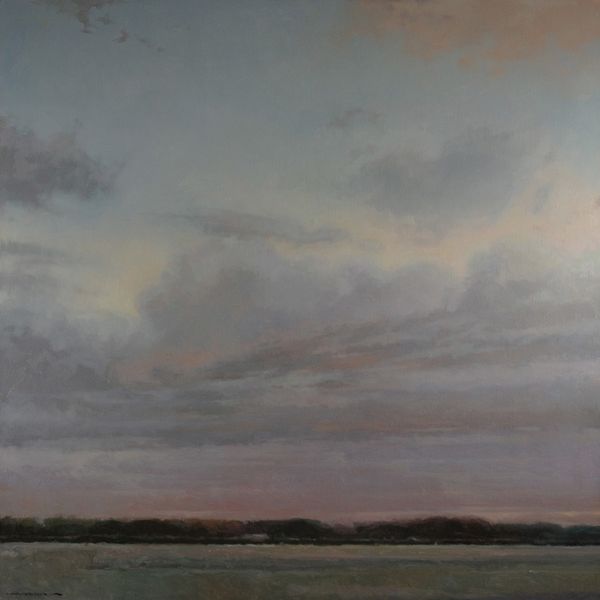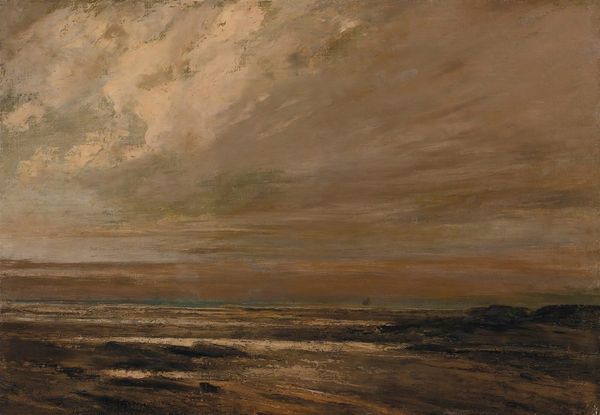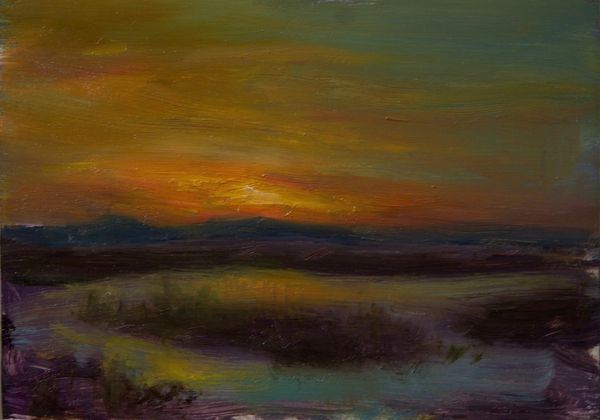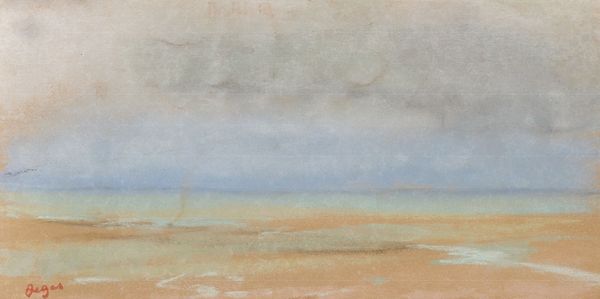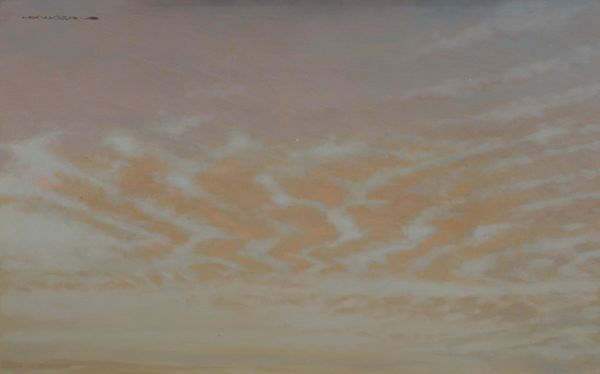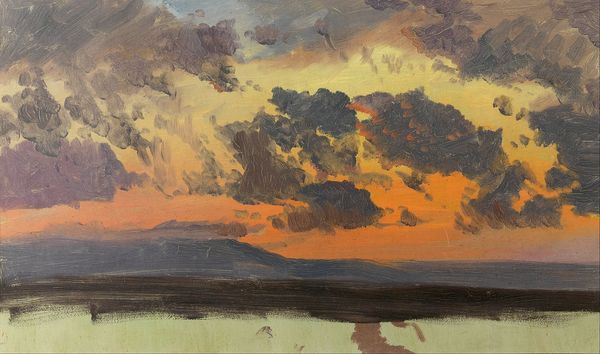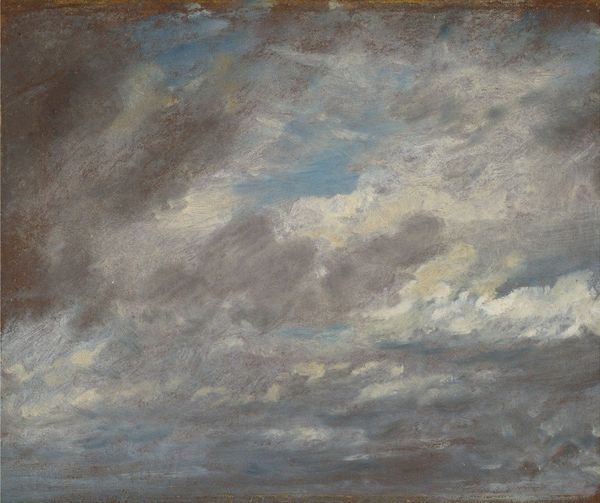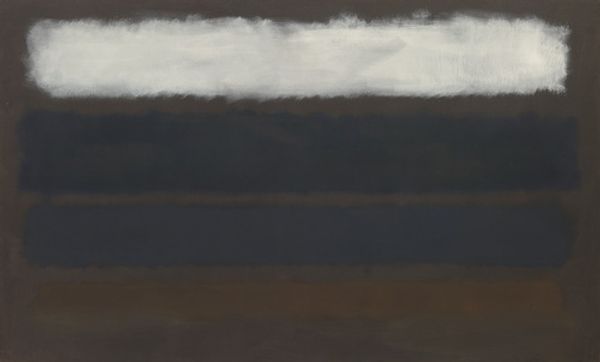
painting, plein-air, oil-paint
#
sky
#
painting
#
impressionism
#
plein-air
#
oil-paint
#
landscape
#
colour-field-painting
#
oil painting
#
romanticism
Copyright: Modern Artists: Artvee
Art Historian: Editor: This is "Western Light" by Joseph Lorusso, it seems to be an oil painting. It reminds me a little bit of color field painting, with those blended sections. What strikes me most is how grounded it feels, even though it’s mostly sky. What do you see in this piece? Art Historian: It’s interesting you mention grounding because plein air paintings were often deeply entrenched in the social context of labor and leisure. We should consider the labor of creating art outdoors. Think about the material constraints - transporting paints and canvas, battling the elements, and the physical act of capturing fleeting light. This isn’t just about aesthetics, it is about the materiality of making a piece outdoors. Does knowing this alter your reading? Editor: Definitely! I didn’t think about the challenges of painting outside at all, just the aesthetic choice. The brushstrokes look very quick. Did that style impact its reception by critics, perhaps elevating the painting by pointing to the skill and the labor involved? Art Historian: It’s plausible. Consider that Impressionism, of which this style is evocative, disrupted academic norms in the art world. Painting "en plein air" transformed how painting was created and perceived and valued. In valuing these works did that change the consumption of and production of the raw materials to create? Editor: So it’s less about the beauty of the sunset itself and more about how the painting itself was created, who made it, and under what conditions. That definitely opens up a new way of thinking about art. Art Historian: Precisely. Shifting the focus from pure aesthetics to the means of production offers valuable insights into the relationship between art, labor, and social value.
Comments
No comments
Be the first to comment and join the conversation on the ultimate creative platform.




